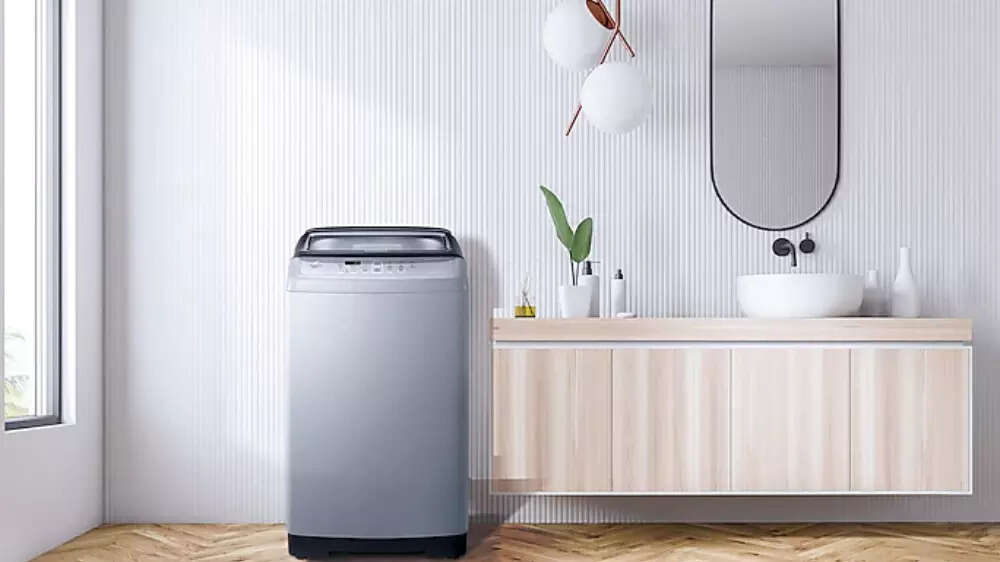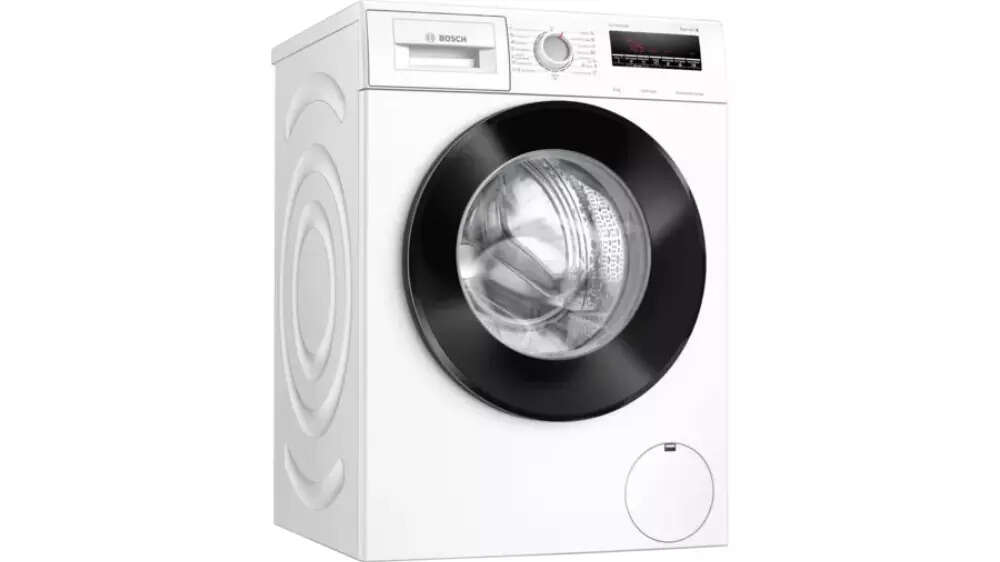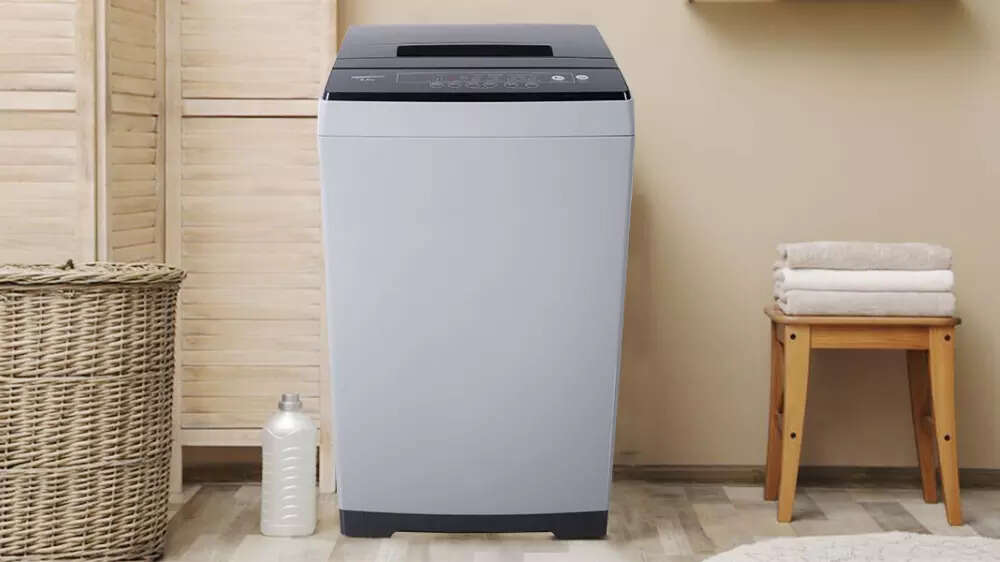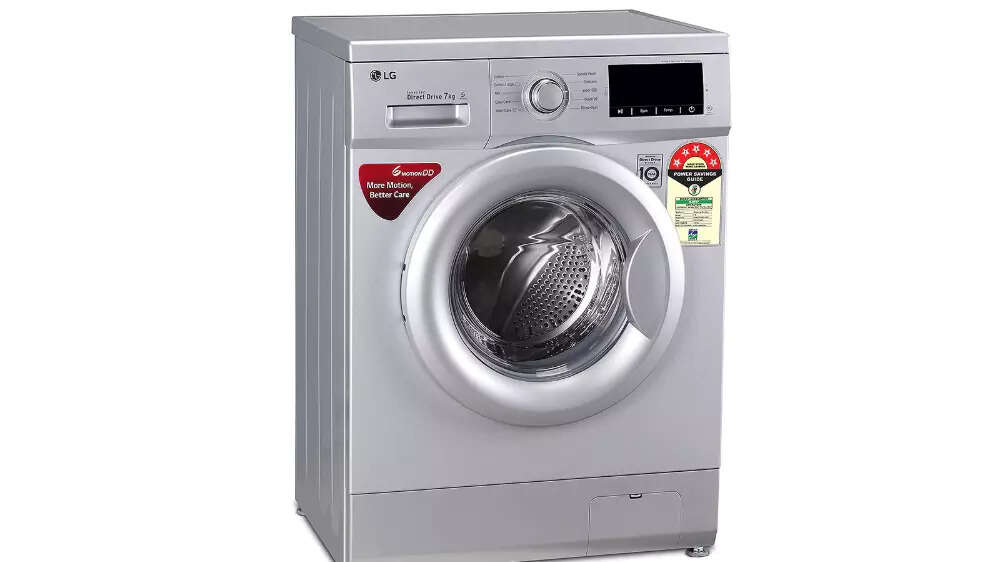[ad_1]
Washing Machine Drum Capacity
The drum capacity of a washing machine is measured by the net weight of dry clothes that can be washed in one cycle. This is usually less than the number of clothes you can fit into the washing machine when it is not running. Usually drum capacities range from 5 kg to about 12 kg. And the size depends entirely on particular needs based on size of laundry, frequency of wash, etc.
The washing machine drum size you need will depend upon your washing needs and habits. Some people wash clothes daily, while some others prefer to do it once a week. In most cases, a drum size of 6kg in front loading and 7KG in top loading should be adequate for a medium-sized household.
Washing machines with a 6/7kg drum will comfortably wash a standard load, and also have programs specifically tailored for smaller loads. For example, most 7kg washing machines will have a Quick Wash (or similarly named) program that will wash smaller loads of regular wear while being able to tackle larger loads on the weekend.
However, for a large family that typically washes more than once a week, a larger drum might be more appropriate. The larger drum will be able to wash more items in a single cycle and can even handle bedsheets and towels along with regular clothes. For a small family or single person, the weekly load will be lesser and a smaller washing machine drum capacity will work just fine.
Wash drum types
Washing machines may have different types of drums, varying on materials, positioning, patterns and other factors.
Plastic drums:
Plastic drums are the most familiar in washing machines as they are more economically-priced. They are mostly seen in top-loading washing machines, both semi-automatic and fully-automatic. The biggest advantage of having a plastic drum is that it is easier to clean and does not corrode by harsh hard water.
Example: Samsung 6.5 kg Fully-Automatic Top Loading Washing Machine –Available at Rs 13,790 at a discount of Rs 3,010

Samsung has a Diamond design running on its plastic drums. Apart from usual benefits such as being gentle on your fabrics, Samsung claims that its tests prove that the textile area exposed to the harmful effects of washing in conventional washing machine drums has been reduced by as much as 79%.
Steel drum:
Steel drums are a more premium feature and can be found in both top load and front load washing machines. Most manufacturers have their own technology in the design of a steel drum. The aim is claimed to be to ensure your clothes are not damaged but they are thoroughly cleaned during the wash and spin cycles.
Example: Bosch 8 kg 5 Star Fully Automatic Front Load with Heater – Available at Rs 40,990 where you can save Rs 7,609

Front loading vs Top loading
A washing machine drum can also be placed horizontally or vertically. A simpler explanation of this is, a horizontal drum is what you’d find in a front-loading washing machine. A vertical drum is present in top load washing machines. They both have their own set of advantages and disadvantages.
Top Loading
Washing machines with a vertical drum load from the top, and the drum spins around a vertical axis. Traditional top-loading models are equipped with an agitator, a finned post in the middle of the drum that twists and turns during the wash cycle to move the clothes through the water. Some vertical-drum washers use an impeller rather than an agitator; an impeller is a rotating hub at the base of the drum that creates turbulence in the water during the wash. This effect moves the clothes more gently than an agitator does.
Some modern top-loading washers are high-efficiency models. They achieve greater overall efficiency by filling the drum partially with water during the wash cycle and they spin at higher speeds during spin cycles. The high-speed spinning removes more water from the clothes, thereby decreasing drying times and increasing energy efficiency.
Traditional top-loading models are the least efficient of all washer types; they use relatively large amounts of water, they wash fewer clothes per wash cycle and their relative low spin speeds result in long, energy-consuming drying times.
Example: AmazonBasics 6.5 kg Fully-Automatic Top Load Washing Machine – Available at 58% discount at Rs 11,299 where you can save Rs 15,701

Front Loading
The drum of a front-loading washer spins around a horizontal axis. The drum fills only partially with water and the spinning drum tumbles the clothes through the water. Because of the tumbling action, front-loading washers need neither an agitator nor an impeller and so are gentler on clothes than top-loading washers. They also are typically able to accommodate larger loads than top-loaders and some models have even higher spin speeds.
The loading doors of front-loaders are on the side of the machine and lower to the ground, however, they may be more difficult to load. The door gaskets on some models also have the tendency to remain wet after wash cycles, which can result in the growth of mold in the machine.
Most horizontal-drum washers spin even faster than high-efficiency vertical-drum machines and they use less water than traditional models, so they are generally more efficient. The larger capacity of front-loading machines gives them an advantage, as well, and high-quality front-loaders clean clothes more effectively than most top-loaders.
Example: LG 7.0 Kg 5 Star Inverter Fully-Automatic Front Loading Washing Machine – Available at Rs 27,990 where you can save Rs 12,000 at 30% discount

How important is the capacity
It is not correct to assume that the bigger the size, the better cleaning performance and value for money it will have. Larger washing machines do have a number of advantages, but there are also significant disadvantages of owning them.
The main advantage of a large washing machine drum is that it can hold more laundry, which means that you can stack bigger loads in every wash. In the long-run, fewer but larger washes are better than more frequent, smaller washes. So if you are using a larger washing machine that you need, you are saving on water and electricity costs.
Another advantage that is frequently overlooked is the fact that a larger washing machine is more attuned to larger loads, which means it might have a few programs that are more suited to bulkier items such as curtains and bedsheets. A smaller washing machine may not have all these programs and be more suited to regular smaller loads.
One of the primary disadvantages of larger washing machines is that they are more expensive to buy because the drum has a larger capacity and there are additional programs for bigger loads. Also, if you regularly run them only half full, they contribute to larger expenses in terms of water and electricity in every cycle.
Utilisation of drum capacity
There might be two kinds of issues with loading the drum of your washing machine – Overloading and Underloading.
In the case of overloading, there might be performance issues when the drum is filled beyond its ideal bearing capacity. When the drum is overfull, the clothes inside can clump together and rotate as one mass. This would mean that the detergent isn’t adequately spreading out to reach all items and will also not be rinsed properly. This, in turn, means that the dirt in all the items will not be dislodged and those items will not have enough room to move around. Moreover, the clothes will get very tangled and even creased because of such overloading.
A general thumb rule is to load the drum to only 80% of its capacity so clothes have enough room to move around during a wash cycle. When you put in other fabrics such as jeans or a woollen sweater, the metrics change only if it isn’t cotton. Certain cycles can only take loads that are smaller than the recommended capacity. Silks, delicates or woollens must be loaded in smaller sizes so they do not get damaged.
The other problem is that of underloading. It can be very wasteful in terms of water and energy consumption when you underfill a drum below its capacity. You are essentially using the same program you’d use in a regular wash when you are washing only two pairs of socks and a t-shirt and you are therefore using the same amount of water and electricity to do so.
[ad_2]
Source link
